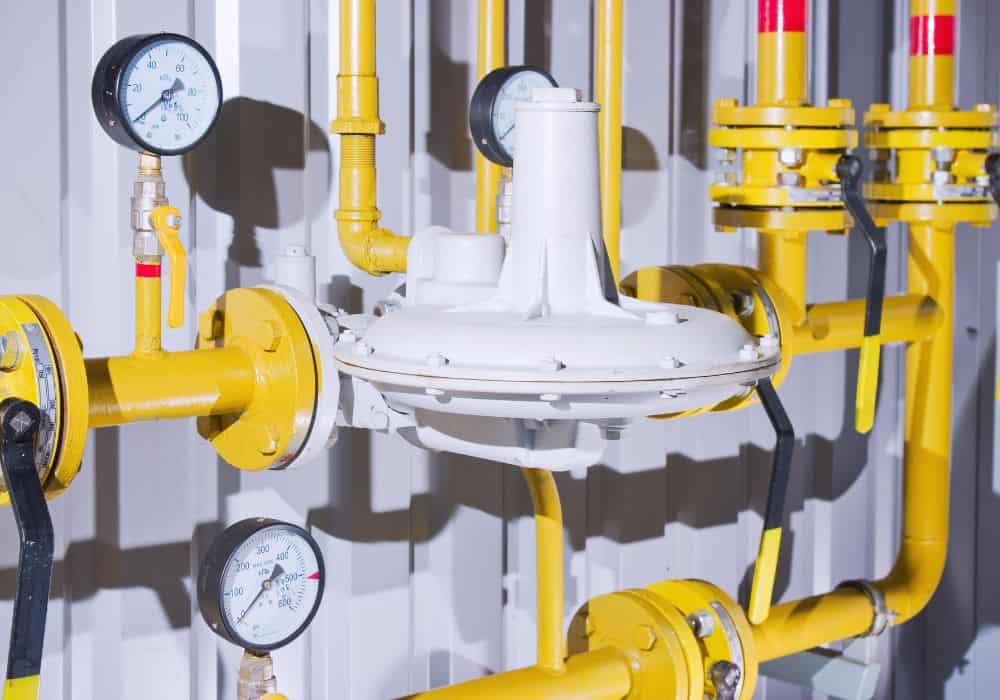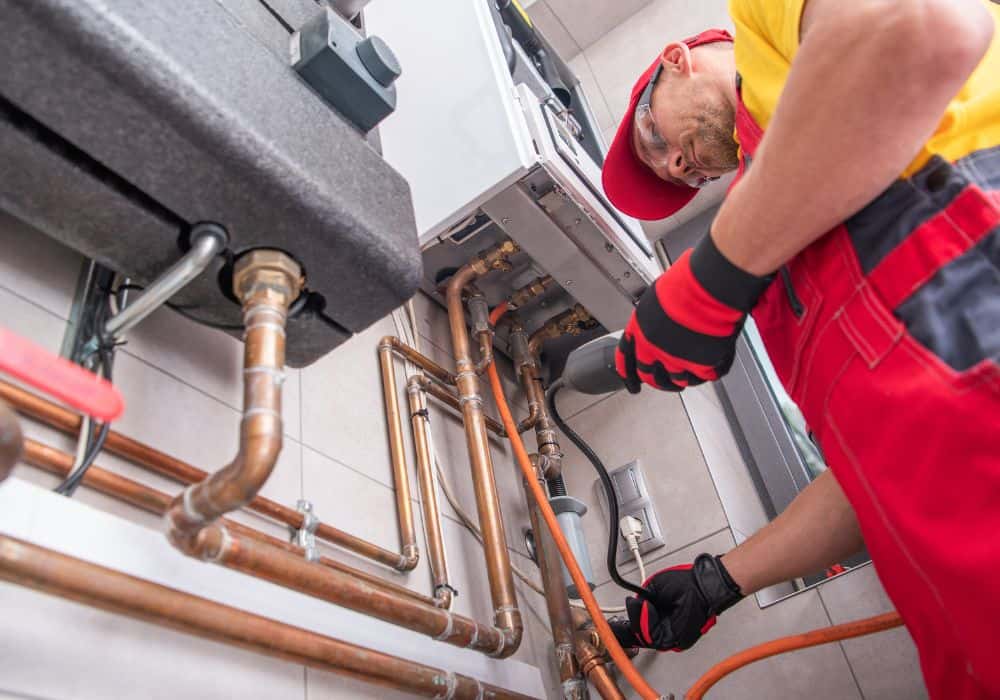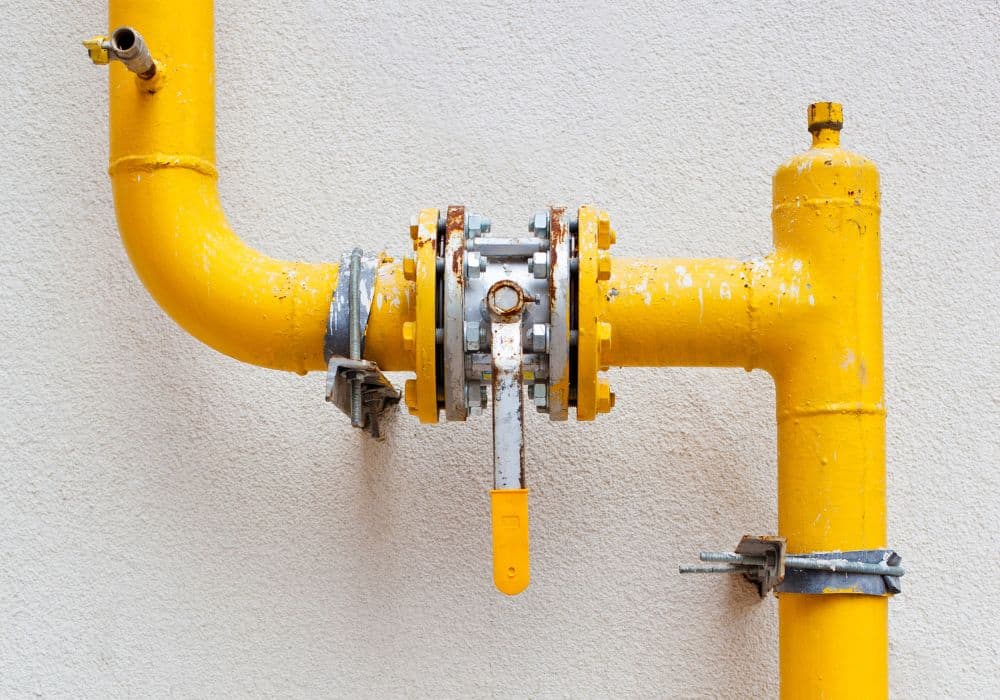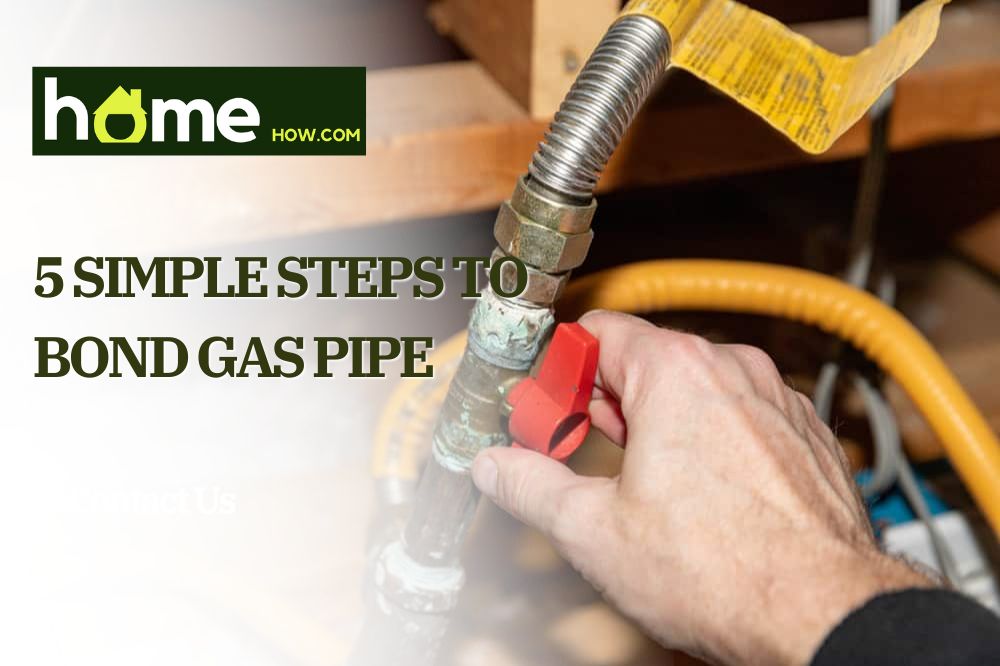Bonding is a safety technique that protects you, your home or your business, from unexpected and dangerous electrical faults.
In simple terms, it connects metal parts and piping to a grounded conductor. Why is this important? Well, if electricity is introduced into a circuit, for example, during a lightning strike, this can then spread evenly across all components nearby. It can then jump sporadically jump as an arc and cause a fire.
The results of an improper gas pipe can be costly and, in some cases, fatal. For that reason alone, bonding is a requirement by law. You must get up to speed on bonding techniques and inspect and monitor the condition of the bond for future years. This applies to both new and existing systems.
In this article, we’re going to examine how exactly you can bond a gas pipe. We’ll also cite relevant regulations that keep you updated on the requirements expected of you and also share expert tips to help you in your endeavor.
A note on regulations
Although every country and justification may differ in terminology and specifics, bonding gas pipes is almost always a mandatory exercise that needs to pass the satisfaction of a qualified electrician.
For example, all engineers and electricians in America strive to bond gas pipes following Section 250.104 (B) of the National Electrical Code (NEC).
In the video below, Mike Holt Enterprises explains precisely what the terminology demands of you:
Step-by-step on how to bond gas pipes:
The below steps focus primarily on installing and bonding CSST (corrugated stainless steel tubing). Tips on working with copper and lead metal piping can be found towards the end.
Equipment you will need:
Below are the tools, fittings, and parts you will need to bond a gas pipe:
- CSST piping
- Tubing cutter
- Deburring blade or utility knife
- Bonding clamps
- Pipe bushings
- Bonding conductor (stranded copper or aluminum)
- Pipe straps, bands, or hangers for securing pipes

1. Safety precautions
First, you must ensure you are working in a safe environment. Turn off the gas in your home, and examine all fixtures of your appliance and pipes for any breaks, damage, tears, or signs of weakness.
Ensure all tubings and fittings are clean and dry before any installation. Furthermore, you must ensure harsh chemicals are strictly kept away from the workspace, as these can corrode fittings and the internal structure of the pipe.
Expert tip: Plug or tape tubing ends to prevent any dirt, dust, or debris from entering during the entire bonding process.
2. Plan accordingly
Regulations state that bonding on gas pipes “must be accessible,” so if you are installing a bond in a new building, or rerouting an existing system, make sure you can reach this point of the pipe easily in the future.
Because CSST gas pipes can bond inside and outside your home, this gives you a lot of breathing space on where you can put this accessibility point.
That said, we recommend that you always try to take the most direct route from your gas appliance or existing pipeline to the gas meter or grounding electrode system. This keeps complications to a minimum and protects the pipeline’s structural integrity.
Although somewhat flexible, you should avoid putting unnecessary stress on CSST piping, especially from bending, twisting, and stretching. Gas pipes should have a bend radius of 8” or more, which helps reduce potential arcs from jumping to other conductive surfaces, improving the bond’s effectiveness.
3. Cutting pipe to exact measurements
Many people wish to replace old piping as part of their maintenance. CSST offers many benefits over old tubing, and it is pretty easy to install new parts as you apply your bonding.
Cut the CSST pipe to the desired length on a straight section with your tubing cutter. Generally, it would be best to leave at least 25mm so that you can fit the attachments. Ideally, it would be best to center the cut between the pipe grooves.
Be careful when handling, as the cut-end will no doubt be sharp. Use can use a deburring blade to soften the edges. Place the cut end into the stripping tool, apply gentle pressure, and rotate until the blade cuts through all jacket layers.
4. Threading directly into the gas appliance
Place the pipe into the appliance connection, and slide the nut on. Insert bushing onto the fitting body; this helps connect the tube to the appliance if the diameters do not match. If you feel resistance, this shows a tight connection formed.
Next, using a wrench, slide the nut over the bushing. Only rotate the nut and not the fitting to create a secure seal. Again, feeling some resistance is expected. Many people tape any exposed metal gas piping with a self-bonding silicone tap to protect it from abrasive materials and chemical residue.
NB: Some gas appliances have a FAC, a flexible appliance connecter. These are often short, yellow tubing that acts as a gas distribution system. For this reason, this appliance does not need bonding. Check your appliance’s manufacturing guide for more details.
5. Insert bonding clamp
Although the below video is designed explicitly for a branded yellow CSST, the same principles may apply, and you can use the technique on other pipe types, sizes, and positions.
- Attach the bonding clamp to the first fitting of the pipe
- Next, grab your bonding conductor. This can be either solid or stranded copper or aluminum – so long as it is not smaller than or equivalent to a six AWG copper wire.
- Run this through the bonding clamp.
- This wire is then attached to the grounding network via the busbar box.
Expert tip: If applying the clamp to the pipe’s surface, ensure it has been sanded down to bond to bare metal. Any abrasions can hamper the security and longevity of the bond.
Expert Tips:

- Manufacturer’s instructions: Consult the manufacturer’s installation instructions on all equipment, including any appliance, piping, threading, and additional tools.
- Surrounding circuits: Plan your bonding conductor relative to the rating of the circuit nearby, as this is the source of the potential electrical arc.
- Regulations: In America, you must adhere to the National Electrical Code (NEC), the benchmark for safety against electrical hazards. The electric code can be found here.
- Inspection: Examine all equipment carefully before bonding. Ensure all surfaces, including the pipe’s interior and exterior, are clean and free of chemical agents.
- Before turning on the gas: Ensure the bond has been fully completed before turning the gas back on.
- Perform a leak test solution: Some people use the traditional soap and bubbles method to detect potential fractures in pipes. You can also buy commercial products which detect leaks more thoroughly.
- Bend radius: Some pipes, including CSST, can bend slightly to help navigate around walls, flooring, and more. So long as you maintain a bend radius of 8” or more.
- Keep clean: Regularly ensure dust workspace remains clean, especially around the bonding jumper and if on a building site or bonding a pipe behind walls/underneath floorboards. Tape the ends of the pipe to eliminate dust gathering inside.
- FAC: Some gas appliances come with their own gas distribution system known as a ‘flexible appliance connector.’ These do not require bonding.
- Create space: Regardless of vertical or horizontal piping, create as much space between the bond and other metal systems that may be under flooring or underground.
- Expert opinion: Home inspectors can examine your gas piping system, plumbing, and gas appliances for unforeseen hazards, especially if you are in an area prone to lightning strikes.
- If you smell gas or fumes, leave your home immediately and call emergency services.

Conclusion
Bonding is an essential safety measure to protect you and your home from the unpredictable nature of natural gas and electricity.
Whether it’s shielding you from lightning strikes, or an electrical build-up that arcs to other metal surfaces, a proper bond is an ultimate defense. Your safety cannot be compromised or ignored.
Applying a tight bond is relatively straightforward once you follow the guidelines and regulations relevant to your jurisdiction and the materials you use.
You should always consult an expert’s second opinion and ensure bonds follow accordance with the law. If in doubt or if you smell the presence of gas, contact emergency services immediately.
That said, if you are confident in your skills and still have questions left unanswered about bonding gas pipes, please leave a comment below. But if in doubt, remember:
- A tight seal is essential for establishing a proper gas flow
- Ensure the bond is free from dirt, debris, or harsh chemicals
- Create as much space as you can between the bond and other metal systems
